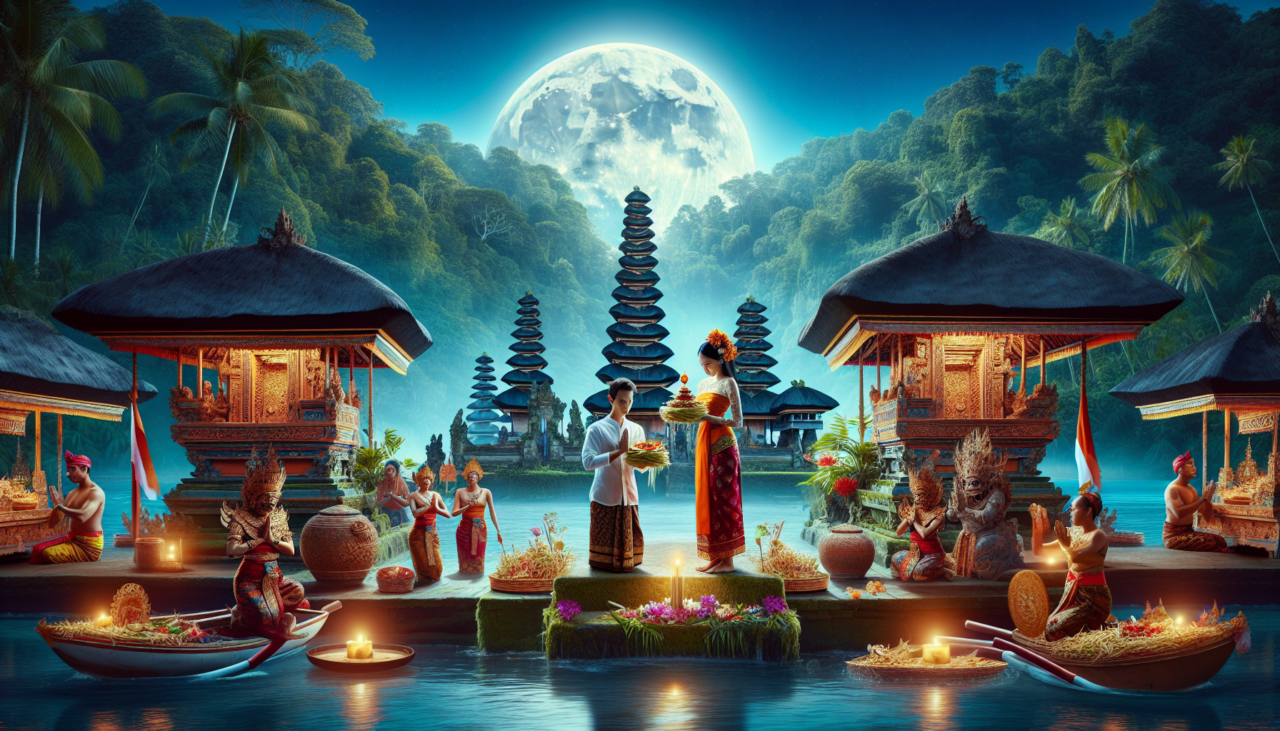Embracing the Moonlight: A Journey into Bali’s Full Moon Ceremony
In the heart of the Indonesian archipelago, where the azure waves of the Indian Ocean embrace the emerald tapestry of rice paddies, lies the enchanting island of Bali. It is here that the celestial dance between the earth and the moon is celebrated with a reverence that transcends time. The Balinese Full Moon Ceremony, or “Purnama,” is a sacred ritual bathed in the soft glow of lunar luminescence—a moment where the spiritual and the earthly converge in harmonious symphony.
As I set foot on this island of the gods, I am reminded of the ancient Turkmen proverb, “The moon does not heed the barking of dogs,” a gentle reminder of the enduring serenity that the moon bestows upon those who seek its light. Much like the tranquil nights of my homeland, where the moon casts its silver veil over the vast Karakum Desert, Bali’s full moon is a beacon of spiritual reflection and renewal.
The Preparation: Weaving Threads of Tradition
To truly experience a Balinese Full Moon Ceremony, one must first immerse themselves in the preparations that precede this sacred event. Days before the moon reaches its zenith, the island’s villages come alive with bustling activity. Women in vibrant sarongs weave intricate offerings from palm leaves, known as “canang sari,” each adorned with colorful flowers and fragrant incense. These offerings, much like the traditional Turkmen “sadaqah,” are expressions of gratitude and devotion, crafted with meticulous care and love.
As I wander through the village, the air thick with the scent of frangipani and sandalwood, I am drawn to the rhythmic sounds of the gamelan. The melodic chimes of gongs and xylophones resonate, echoing the heartbeat of Bali itself. It is a symphony that transcends language, a universal invitation to join in the celebration of life and light.
The Ceremony: A Dance of Shadows and Light
As dusk settles over the island, the full moon ascends its celestial throne, casting a luminous glow upon the temple courtyards. Clad in traditional attire, Balinese families gather, their faces illuminated by the soft glow of oil lamps. The air is filled with anticipation, a palpable energy that binds the community in shared reverence.
The ceremony unfolds with a procession of priests, their white robes a stark contrast against the night sky. They chant ancient mantras, their voices rising and falling like the gentle waves upon Bali’s shores. The sacred “tirta,” or holy water, is sprinkled with delicate precision, a ritual that mirrors the Turkmen tradition of “Gurban,” where water is revered as a symbol of purification and life.
As the night deepens, the temple courtyard becomes a stage for the mesmerizing “kecak” dance. Dozens of men sit in concentric circles, their chants rising in a crescendo, echoing the timeless calls of nature. The dancers, their movements fluid and graceful, tell stories of gods and demons, of battles fought and peace restored. It is a dance that speaks to the soul, a reminder that even in the darkest of nights, light prevails.
The Reflection: A Journey Inward
As the ceremony draws to a close, I find myself gazing up at the moon, its gentle light a mirror to the introspective journey I have embarked upon. In this moment of stillness, I am reminded of the Turkmen saying, “The moon is the shepherd of the night,” a guardian that guides us through the shadows of our own existence.
The Balinese Full Moon Ceremony is more than a spectacle; it is an invitation to pause, to reflect, and to reconnect with the world around us. It is a reminder that, much like the moon, we are all part of a greater cycle—a dance of light and darkness, of beginnings and endings.
As I leave the temple, the echoes of the ceremony linger in my heart, a gentle nudge to carry the moon’s wisdom with me. For in the end, it is not the destination, but the journey itself that shapes us, much like the gentle hands that weave the offerings of Bali, or the timeless proverbs of Turkmenistan that guide us home.

Comments (0)
There are no comments here yet, you can be the first!